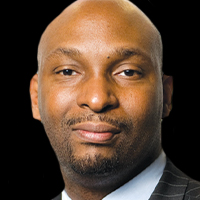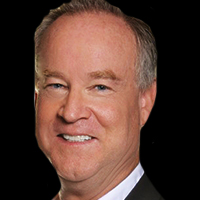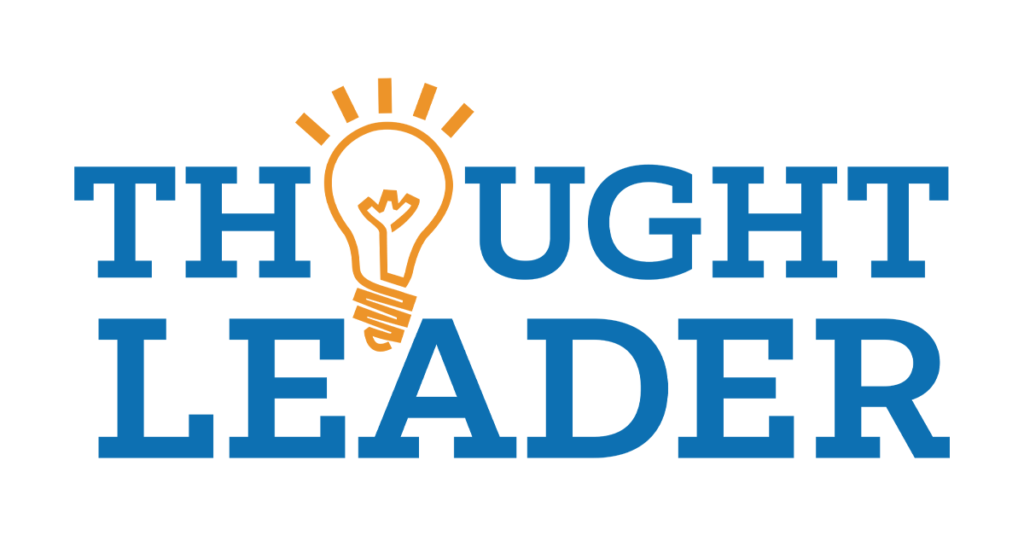The 2020 Thought Leader Award Winners Are …
[tta_listen_btn]
We just recognized our 10th Annual Innovations Award Winners. Last year we launched the Sales, Marketing & PR Trailblazers Award, The Most Powerful Women In Fintech Award and the Lending Luminary Award. This year all of those awards will be returning, but now we are going even further by adding the Thought Leader Award.
Why are we launching this new award you might ask? Because we live in unusual times. The impact of COVID-19 shows us that it’s time to think outside of the box so we can move forward as a country and a world. Our existing awards all acknowledge the good work that executives are doing now, but we think it’s time to reward future work and initiatives. We need thought leaders that are not afraid to step forward and blaze a new trail. We need creativity. We need bold new ideas.
In alphabetical order the award winners are:
Tim M. Anderson
SVP Business Development & Corporate eStrategy
Pavaso, Inc.

Ever since FannieMae and FreddieMac announced the benefit of a SMART Doc eNote Tim has been an early and tireless advocate of eMortgages and eliminating the need, cost and time of maintaining paper-based processes. Once you free up both systems and thinking that forms are the main way to still capture and view data on documents and recognize that what’s important is the data on them you can envision whole new ways to process, validate and ensure it’s really about the accuracy and compliance of the data and not the documents that is important, according to Tim.
We are seeing confirmation of this with GSE sponsored initiatives like Day One Certainty where we are auto validating information directly to the source/system of record like Social Security numbers, going to the IRS for verification of tax information and direct asset verification from banks, which all creates electronic evidence of compliance by keeping a date and time stamp audit trail that will provide irrefutable proof of compliance.
With the ability to not only perform better automated due diligence of the data are more intelligent systems being applied like AI and machine learning that will virtually eliminate some of the more rote processes of people doing mundane tasks which autobots can now perform. As more data get processed and used these systems will become even more intelligent and able to take on more of the decisioning of the process to ensure more consistency in the automated underwriting of the loan as well, Tim believes.
Finally as these decisions can now be made earlier in the process lenders will now be able to save more time and money processing “good” loans and not bad ones effectively shrinking the time it takes to close and eClosing the loan eliminating most of the paper from application to close in the process.
Tim says: As we collect and validate more data earlier in the process, we should also be able to better identify (investor qualified loan) who we will be selling the loan to sooner as well. If we know that we should be able to take the traditional post-closing, pre-funding QC process and do it now “prior” to closing. Further, since we can now trust the data on the loan it will provide an even greater incentive to rep and warrant against any buy-back issues to the investor. By including an electronic audit trail of what was verified and when, this should greatly eliminate many of the current trailing doc issues, introduce more certainty into the process and reduce risk so they could “Fund next day with Certainty” as well.
Dan Bailey
Senior Operations Executive and SVP
WFG Lender Services and WFG Enterprise Solutions

Dan Bailey is more than the senior operations executive and SVP at WFG Lender Services and WFG Enterprise Solutions. He is a champion for positive change within the company and within the industry, always looking to find ways to improve the title insurance process and to save clients time and money. With a unique combination of legal, technical and sales acumen and a passion for problem solving, Dan’s work has helped lenders achieve huge savings of time and money—and boosted his company’s reputation as a true housing industry innovator.
Dan Bailey has helped transform WFG National Title Insurance Company into one of the housing industry’s most dynamic and forward-thinking companies, a reflection of his innovative views toward lending. This is creating real savings for lenders by removing time and cost from real estate transactions.
Dan has spearheaded many important company initiatives launched over the past 12 months, distinguishing himself as a torchbearer for positive change. Among his initiatives is DecisionPoint, an instant, clear-to-close decisioning engine for refinance channels that analyzes transactions depending on the type of property or the borrower’s characteristics, and assigns them “grades” based on the length of time it will take to clear title. In comparison to the hours or even days it typically takes to deliver a title commitment and determine title status, DecisionPoint is capable of issuing a “title clear” grade in less than three minutes–allowing WFG’s clients to speed up closing timeframes, improve loan conversion rates, and ultimately, enhance the borrower experience.
Today, lenders waste up to 50% of their time on transactions that don’t close. Bailey is focused on improving that conversion rate. By providing lenders with information near-instantly, they can engage with their borrowers in a more meaningful way. DecisionPoint delivers this by offering a Title history, tax rates, everything. “We know this knowledge is very powerful for lenders who actively engage with their borrowers,” Bailey said.
Why don’t transactions close? Pick a reason. Defects at the collateral level. Matching inexperienced loan processors to more complex transactions. Taking too long for the title to clear. This is just an example of how incomplete information can kill a mortgage closing. It only takes one reason. Just one.
Bailey believes he has the solution. DecisionPoint identifies title defects at the collateral level, which is a benefit to investors, especially. DecisionPoint also offers a curative process, so lenders can put their best processor on the more difficult loans and their more junior processor on easier loans to close. We allow lenders to correctly assign loans to the rightly skilled processors extremely early in the process. With the ability to provide immediate decisioning for the vast majority of U.S. properties, and immediate title clearance for about 30% of processed transactions, this saves considerable time for processors, underwriters and loan officers.
Among his colleagues, Dan is known for taking a holistic approach toward solving client challenges that is equal parts customer-focused and metrics-driven. “My goal is to provide our customers with tools, data and service that give them confidence that every order they place with us is going to be handled in the best possible way,” he said.
With values like that, perhaps it is little wonder Dan is so highly regarded by his colleagues. “Dan is a comprehensive leader who is 100% focused on being a part of his client’s success,” says Patrick Stone, WFG’s founder and chairman. “He’s someone who obsesses about making his clients look good, as evidenced by his outstanding lender scorecards and weekly client issues report—which are always very brief. He’s one of the secrets to our success and we’re extremely fortunate to have him on our team.”
Ken Bartz
Co-Founder & Chief Visionary Officer
Monster Lead Group

Ken began his mortgage career in 1993 and the process is relatively the same 27 years later, even though we have gone from an analog world to a digital one. When he began, paper records were backed up by paper records, but today everything lives somewhere digitally. While there are companies like DocIt and Finlocker which have tried to help address this problem there is a fundamental problem in the solution, which is they are “company-facing”. These systems and data are limited by this aspect of corporate ownership and not consumer ownership.
Just as credit decisions are automated by all companies because credit comes from a centralized, agreed upon repository, so should income and collateral. Ken says: Think about how fast the loan process would go if income and value were automated! This is now possible because of cloud storage/computing, APIs and machine learning. We’ve seen Fannie Mae and Freddie Mac do a part of this with valuation, and this is possible because of their aggregation of data.
However, this could be expanded across all loan types by creating a real-time centralized appraisal repository. Companies underwrite tens of thousands of loans per month. This information is held very privately, but privacy concerns aside, if this information were held in a properly secured, centralized database, it could make subsequent underwriting decisions faster.
For example, there is an app called Mint that aggregates consumer financial information to give a consumer centralized visibility and control over their finances. A similar consumer-driven connection could make for a faster, more automated loan approval process. Working in accord, these solutions could lead to closing loans in under a week.
Just imagine the consumer’s user experience! That alone would drive up retention, drive down fall out and bring down costs to consumers.
Obviously, there is no magic wand, but it seems to Ken that innovation in this process is necessary to avoid significant disruption.
He notes: Look at Uber. It did not reinvent taxis. All Uber did was make the consumer’s user experience better by creating transparency, ease of use, and removing the friction from getting a ride in a hurry.
The same tools Uber used to solve those problems were available to the taxi industry for years and the taxi industry was better positioned to execute then Uber. Taxi companies, much like mortgage companies, were making plenty of money and if they wanted to make more, they just got more bodies. They were better positioned to fix the problem than Uber but were too company-facing in their problem solving.
This is very comparable to the mortgage industry in that companies are focused on internal-facing issues, or they are trying to solve a big external problem by using more labor.
Remember, just because your process hasn’t changed doesn’t mean that consumer expectations haven’t, continues Ken. We are living in a world of immediacy and transparency. I hope the mortgage industry catches up. The loan process is antiquated, inefficient and costly and a major point of frustration for the consumer.
We run the risk of being the taxi company to a new Uber-like industry that swoops in and removes the friction of getting a loan. If there was ever a process that called for innovation this would be it, he concluded.
Vladimir Bien-Aime
President and CEO
Global DMS, LLC

Until recently, the mortgage industry has experienced small, incremental innovations with nothing truly disruptive. The combination of the old guard being resistant to change and the prevalence/limitations of legacy systems has truly stifled innovation in comparison to other industries. As far back as 2013, the insurance industry experienced a significant innovation through the introduction of the QuickFoto app by Allstate, which enables customers to submit photographs of their damaged vehicles on their smartphones, expediting the auto claims process. The app also allows customers to select their body shop and supports direct deposit of the claim check. Global DMS recently integrated the Proxy Pics app into its eTrac flagship appraisal management product to enable borrowers to securely take and submit their own photographs of the subject property being appraised. Global DMS is certain the app will help lenders mitigate risk while adhering to social distancing guidelines, but its adoption is uncertain.
Fortunately, Quicken’s Rocket Mortgage success in overhauling the lending process and the focus on providing a stress-free borrower experience has motivated the current mortgage players and brought many new ones into the fold. Similar to John F Kennedy’s goal of putting a man on the moon, it was impossible until it was possible, then others followed suit. Vladimir has no doubt we will see a 24-hour closed mortgage within the next decade but the naysayers persist.
It’s evident that smart lenders and vendors are adapting quickly and challenging the status quo. Global DMS has invested significantly in R&D to bring its next-generation product to market in anticipation of a new mortgage era. The influx of new vendors gaining traction is fueled by VC money and the desire to disrupt the current system by offering aggressive lenders a path toward the future. Global DMS looked to the future and methodically built a platform that’s 100% configurable. This is a very exciting time for mortgage industries but is also filled with uncertainty. The one constant – more than ever as we enter a post-pandemic world – will always be change.
Vladimir says: The mortgage industry is beginning to make progress on the front-office processes and technology that improve the borrower experience, but that’s only half the story. There is little value in providing an impeccable application process if it stalls out as a result of disparate systems and manual processes. MISMO was founded to provide data standards for all mortgage participants to communicate effectively. Although the MISMO standard has made some significant strides in the past several years, the adoption has not been significant.
The key to achieving the goal of having a fanatical customer and a strong bottom line is a consistent and compliant workflow with all the parties involved. This is unattainable without the seamless interconnectivity of all phases of the mortgage process and the key systems that support them. A lack of interconnectivity results in re-keying of data, manual workarounds, compliance risk, and an increased cost per loan, followed by disappointment on the part of the borrower. In the current state of the industry, most lenders are very resistant to make changes to their technology, especially their LOS. This type of technology change is perilous on its own but the added complexities of accounting for and transitioning dozens of vendors can result in catastrophic consequences if not executed properly. Often, to make the transition, lenders are required to abandon many of their established vendors and to select alternatives during a migration, drastically increasing their cost and risk. Relationships are about trust; we all prefer to choose the companies and the people with which/whom we are comfortable.
Vladimir continues: The future belongs to the vendors that collaborate, integrate, and communicate a solution that permits lenders to select the best of breed technology. This methodology will simplify the transition to new technology and facilitate the gradual decommissioning of the prevalent legacy systems, ushering in a new age of automation, compliance, and profitability. The current mortgage environment and technology do not allow for this type of flexibility, and therefore are hindering progress. Vendors’ decisions to partner and integrate are not driven by innovation or effectiveness, but merely by client requests. The current methodology results in many one-off custom integrations, incomplete solutions, and expensive and time-consuming integrations.
Despite all the marketing whoopla, no one vendor can provide a solution for all lenders and manage every aspect of the mortgage process successfully. Salesforce AppExchange is an impressive example of an open ecosystem that provides all vendors a consistent method to integrate, and it delivers unparalleled choices for their customers. Salesforce AppExchange is the world’s largest business applications marketplace, home to over 3,000 apps and components that extend Salesforce’s reach and functionality. Furthermore, all apps are pre-integrated to work seamlessly with Salesforce through automatic updates. The AppExchange approach accelerates innovation and drives down the cost for both the vendor and the lender.
By truly embracing an open standard, all vendors could maximize their resources by building once and deploying everywhere. An open mortgage exchange would permit lenders to meticulously select the ideal vendor for their specific requirements and not be limited to the currently available vendors in their LOS. This open exchange philosophy disregards preferentialism and industry politics, instead allowing vendors to compete and succeed based on the merit of their solution, not their place in line.
Carmine Cacciavillani
Founder and President
Blue Sage Solutions

Carmine Cacciavillani believes the mortgage lending space has traditionally been relatively slow to embrace new innovations and technologies compared to other industries. The process of originating and closing a mortgage loan remains one of the most fragmented and laborious processes in the entire business world. Carmine also believes systems and processes have been engrained into the fabric of both banks and mortgage companies with little to no impetus to change unless there is some economic or regulatory driver.
As we’ve all experienced over the last few months with the pandemic altering our work habits, many lenders are embracing a number of technologies in order to not only remain relevant, but to also position themselves for any potential impacts that result from this unprecedented time. As a result, Carmine sees lenders embracing solutions that provide an end-to-end experience, from borrower and broker engagement to closing and even cross-selling after the transaction is complete. Instead of maintaining costly legacy solutions across channels, lenders are finally consolidating systems to take advantage of solutions where specific functional areas can be shared across channels.
As Carmine sees it, this cohesive approach to the mortgage process requires a single source of real time data optimized to be used across systems and applications. This should apply no matter who is accessing the loan, or where the data is being reviewed or updated. And, having this available in a secure, scalable, cloud-based environment provides for “always-on” productivity and efficiency for workers, whether they are remote or in the office.
According to Carmine, solutions built on modern technologies using an API-centric approach are now emerging that can take advantage of additional data sources to reduce approval and closing times considerably, using “just-in-time” data to decision the loan. Leveraging automation and automated tasking are further enhancing the combination of both man and machine, empowering lenders to handle cyclical changes while also being prepared for various purchase and refinance booms in the future.
Carmine believes that in today’s world, lenders must leverage technology in order to remain viable. Gone are the days of responding to loan volumes in a linear fashion by adding more personnel. Manual verifications and “stare and compare” processes are becoming extinct as well. In what used to take between two to three weeks of manual investigation, review, phone calls, faxes, and emails, can all be done within minutes with no human intervention.
Carmine thinks lenders must evaluate technologies based on their ability to provide the ultimate customer experience while also driving efficiencies and reducing time to close times. He says one of the key productivity metrics that should be used is the number of closed loans per month per employee. To achieve a higher number of closed loans per person, lenders should let systems and automation drive the process, while allowing employees to focus on delighting customers and handing exceptions. That’s why Carmine supports using integrated data sources across the board, which can eliminate manual keying, as well as using technologies such as workflow automation and machine learning, which can further increase productivity ratios.
Carmine also predicts lenders that provide self-serve models through mobile channels will not only be able to enhance the customer experience and get return business and referrals, but also keep their costs down since the applicant is effectively being guided via an automated, intuitive application process. Behind the scenes access to things like fees, taxes, licensing, and other key applicant details will enables further reduction in churn, because disclosures will ultimately match the data on the closing docs from the beginning. Salespeople will also get back to what they do best – generating additional leads and prospects to help build the funnel and ultimately close more loans.
Molly Dowdy
Co-Founder
NEXT Mortgage Events

Since the effect that COVID-19 has had on the industry, Molly believes that the state of innovation in lending has accelerated greatly. Not only has the entire industry had to adapt working remotely, the entire nation (and even the world) had to find inventive ways in order to continue scaling their business models. It’s been quite impressive to see the productivity among businesses and employees rising during a time where everyone is working remotely while not operating within their normal routines.
To improve lending going forward, Molly believes that having an open mind is going to help this industry expand to the next level. Some may have been used to bouncing ideas off of a coworker you’ve been working closely with for years, it’s important to take in other perspectives as they may surprise you in a way that you wouldn’t have noticed before.
Josh Friend
CEO/Founder
Insellerate

Historically innovation in the mortgage industry has lagged behind many other industries, says Josh. A number of lenders are still using outdated or antiquated technology that is holding them back from better engagement with prospective borrowers and from delivering a dynamic borrower experience. One thing that COVID-19 has done is to accelerate the pace of disruption and highlight the need for advanced digital solutions in today’s mortgage market.
Amid COVID-19 and these rapidly changing market conditions in the mortgage industry, communication, and engagement with your current borrowers and prospective borrowers are vital. The need to educate and inform is more critical now than ever before, he continued.
As a lender, now is the time to educate and inform, to stay in front of your customers and potential borrowers by being a source of information and insights to help them through these difficult times.
But to do so in these current conditions presents many challenges. Most companies have moved to a remote workforce. As a result, there are limitations with their current lead management and CRM platform, and employees are busy handling urgent matters. They don’t have time to create the messaging content that needs to go out.
Josh notes: The good news is that there are solutions that provide communication and engagement to address these conditions. So, what do these solutions need to provide? Today’s most advanced CRM & Engagement platforms need to deliver multi-channel engagement through text, social media, email, ringless voicemail, and direct mail all from within one unified platform. Also, the solution must easily integrate into a lender’s current technology stack and efficiently work with future technology. It is this powerful combination that will allow lenders to transform borrower engagement while effectively communicating with their audiences.
John Hillman
CEO
Nationwide Title Clearing, Inc. (NTC)

We are currently operating during one of the most innovative periods in the history of the mortgage business, according to John. Never before have we seen so many new tools being developed and deployed. Much of the innovation we’re seeing implemented is being driven by the necessity brought on by the COVID-19 crisis. In our situation, the advanced technologies that we are presenting clients today have been used internally for many years. Early on, we saw that the companies who excelled in the future were ones that would create the tools required to let mortgage servicers exercise more control over the critical tasks they were managing. In our business, errors are not an option. Consequently, innovation and efficiency have been a cornerstone of our business from the beginning.
John added: Overall, I’m impressed with the technologies coming to the servicing side of the business. Servicers must offer techniques that will give lenders access to information faster, and systems that will allow them to complete their work independently with access to immediate support from the servicers. The tools we are deploying today are designed to give servicers these options, and we feel it’s crucial during these times. COVID-19 has introduced unprecedented complexity to the servicing business, and without prudent management, we could see another historic crisis. Our team is putting a significant amount of effort into making sure that servicers are equipped to handle anything that comes at their businesses next.
Kelli Himebaugh
Director of Sales
Mortgage Builder

Technology is the key to streamlining the manufacturing process of a loan and each new innovation should not only shorten the life cycle for borrowers, but it should also be developed and delivered with the goal of lowering the cost, says Kelli.
I am seeing a lot of SaaS, transaction-based pricing fatigue, she continues. There is a lot of crossover between technologies and lenders are not only confused, they feel that they are double paying for some parts of their solutions. And in the process, lenders are complicating their workflows when deciding how to incorporate their solutions into a streamlined workflow.
New technology innovations that are impactful to a lender’s operations, also must be cost effective for lenders. Vendors that partner for integrations need to deliver innovative solutions that don’t continue to layer more transaction based fees on top of each other.
Kelli continued: There is so much crossover functionality in many of our mortgage technologies today. When partnering, vendors need to build thoughtful integrations with the key portions of their solutions that compliment each other and are easy for lenders to understand. Vendors need to build their technologies so that they can be segmented to target specific needs of lenders that can be incorporated with existing technology relationships a lender may already have.
As a vendor, it should not always be the game to displace a technology for a lender, but to gain the business where the solution will give operational lift to a lender. This most definitely is easier said than done, but if we can thoughtfully work to improve in these areas, especially in vendor partnerships, lenders will reward these efforts with trust and longer term contracts. It’s a win for everyone!
Michael Kelleher
Co-Founder & CEO
Easy Mortgage Apps LLC

Mortgage technology and innovation is in its infancy and mobile technology has never been more important. Mortgage banks and financial institutions are beginning to truly realize the importance of having multiple technology resources available for their employees, partners, and customers. It is easy to see the software solution deficiency and feel the need to build everything. Find a way to provide holistic solutions within your platform. Michael believes we all have a level of expertise that we should focus. Work to get better where we excel. We are starting to see companies do just that. As a result, more partnerships, integrations, and dynamic APIs are available than ever before. This allows mortgage lenders to find a blend of software that meets their unique needs and provide the solutions to meet their business objectives.
While circumstances have driven current behavior to SaaS solutions, we must ask ourselves did this behavior always exists and the mortgage industry is just playing catch up? We believe the answer is YES! Consumers want options, they want to choose how to communicate, they want more communication, they want transparency, and they want it to be simple.
Michael points out: Tech innovators, SaaS company founders, and mortgage industry leaders should continue to fail fast and work to drive these new solutions in this legacy business sector. The market is extremely clear as to what they expect, and it is on leadership to build, innovate, and integrate new systems to meet that expectation. While technology in the mortgage industry is still in its infancy, it is definitely making amazing strides. If we work together, we can probably get this kid off to kindergarten.
Ellie Mae did a survey stating that 75% of lenders believe that they communicate enough with their borrowers. In reality, 38% would provide a higher touch rate than what the lender provides. It is interesting that they use the term “touch rate”. It is also interesting that 38% can be perceived as very low. However, I feel that if 2 out of 5 people believe there is room for improvement, then there is room for improvement.
Push Notifications receive a 98% read rate. Maybe its 97%. It’s the highest converting communication tool available. It is extremely under-utilized. The power of this communication tool lives inside a mobile app. It is customizable to meet multiple business needs and can provide the “touch points” that consumers are expecting. Push Notifications not only drive communicative conversion but can drive literal action through thoughtful Call to Action language. The Call to Action doesn’t have to drive that action inside the application. Maybe you have just sent an important email to review – Push Notify to encourage someone to read the email. Push Notify to make a call. That being said, this isn’t just for lender to consumer communication. We believe that this communication is the key to increase internal communication barriers in enterprise and medium sized financial institutions. If you have company announcements, holidays, anniversaries, birthdays, or simple announcements that arm your staff with information – this can all be driven by Push Notifications.
Michael concluded: The way we have communicated continues to be disrupted for a variety of reasons. If we surveyed how well communication is received top down or parallel inside a financial institution, we speculate that information received is likely 50%. If you believe that 2 out of 5 is an issue, 1 out of 2 must propel you find a new solution to increase your collective communication. We’ve worked with enterprise business for almost 8 years and understand how important communication is at every level. The Push Notification tool can be a vital application for any financial institution interested in increasing its level of communication and efficiency throughout their organization.
Ty Kern
Executive Managing Director – National Production
Sun West Mortgage Company, Inc.

The state of innovation in lending today as a whole isn’t very dynamic or exciting, explains Ty. It’s been heavily weighted towards the front end of the transaction for the past few years with tech companies that rushed into the Point of Sale (POS) space and set the new standard for user experience. This has immensely improved the process from lead conversion up to the point of submission; however, the manufacturing of loans from submission to servicing hasn’t yet improved to match that gold-standard. To be honest, most Loan Origination Systems (LOS) are archaic and aren’t integrating well with the newer technologies to fulfill the customer experience gold-standard throughout the lifecycle of the loan. I feel like we (Sun West) have developed many of the best and most unique tools in lending today with an eye on limiting the time and number of people needed to manufacture a loan, requiring only a few key external partners in order to deliver a 5-star experience to all stakeholders, LO, referral partner, and of course, the borrower.
Our purpose is to get the Loan Officer out of manufacturing loans and back into creating and maintaining relationships.
To truly achieve that, we need 1) bold moves in the Loan Origination System (LOS) arena to move from archaic systems to open API structures matching the POS technology 2) the user experience needs to be seamless from the POS system into the LOS and continue through servicing 3) drive the cost of manufacturing loans down by leveraging state of the art technology (like Zen Docs, TRU Approval, and Virtual Assistant) to create efficiencies in the process, and give more time back to all helping with the loan 4) All parties in the transaction will need to do more if they want to be relevant since their jobs are becoming more efficient due to the automation.
y concludes: If lenders want to compete in 7 to 10 years, they’ll need to be more like technology companies and less like lenders. If they aren’t willing to make that transition, then they’ll at least need to assess their technology stack to stay competitive. The key is to automate the tedious parts and provide more time for the human connection.
Alex Kutsishin
CEO
Sales Boomerang

We brought Borrower Intelligence to the lending industry, says Alex. How did we come up with this? We took the idea of Borrower Intelligence right from the strategy pages of Amazon, Nest, Uber, Tesla, Google, Facebook and pretty much all the market leaders in the consumer products and services space. These industry giants use customer and business intelligence to win the hearts and dollars of their customers while creating bigger barriers for their competitors. We wanted to bring this $10B strategy to the lending industry.
Alex believes: Data, automation, and intelligence. Life is too short. Borrowers are people like you and I. We don’t have time for irrelevant conversations. Borrowers need the very best solution for them and at the right time. That’s difficult. Lenders that use technology to solve this problem for their borrowers will have customers for life.
Joe Langner
President
ReverseVision

Mortgage origination is innately complex, and as the mortgage technology ecosystem matures, lenders increasingly rely upon a myriad of interdependent technologies to meet the unique and varied needs of consumers and lenders.
To develop flexible, cost-effective technology capable of retaining relevance over time, progressive mortgage technology vendors are developing flexible API- and microservice-enabled software that can “plug and play” with lenders’ core platforms.
Forward-thinking technology vendors who build solutions capable of flexing to lenders unique business models and preferred tech stacks will usher in the next stage of digital mortgage advancement.
A true visionary and thought leader, Langner joined ReverseVision as president in March 2020 to help establish HECM and private reverse products as staple products in mainstream lending portfolios. And how does he plan to do that? By spearheading a technological transformation that folds HECM and private reverse mortgages into the initial loan evaluation process and loan origination workflow.
Despite the fact that over 1 million seniors take out a home loan each year, HECM and private reverse mortgage volume accounts for a fraction of overall loan production. An industry thought leader, Langner was uniquely able to recognize that reverse volume is low because the vast majority of senior borrowers are never presented with a reverse loan. That’s because lenders are not operationally equipped to offer forward and reverse loans alongside each other.
Eager to solve lenders’ operational crisis and ensure that seniors have access to an array of financial options, Langner is leading the company through a multi-stage technological and strategic transformation as an API-enabled, flexible reverse lending platform. This will enable lenders to incorporate HECM and private reverse mortgages into the initial loan evaluation process and origination workflow. By making it easy for lenders to establish HECM and private reverse products as staple products in mainstream lending portfolios, more seniors will be able to leverage home equity as a valuable financial planning asset. Moreover, lenders who understand the needs of their senior borrowers and provide them with products tailored to their stage in life will enjoy stronger referral business.
Adopting an API-enabled strategy is critical to positioning ReverseVision for long-term technological relevancy as the digital mortgage space enters a period of accelerated growth. By making it possible for loan originators to easily incorporate senior lending products into their existing origination workflow, Langner is empowering borrowers with choice and a rewarding return on their investment in reverse lending.
Jane Mason
Chief Executive Officer
eMason, Inc. dba Clarifire

Jane Mason’s vision of the current state of innovation in the mortgage industry is the same as her original vision—there exists a real opportunity to profoundly change how we do business. Today, Jane believes the industry has the ability to not simply automate processes, but tap Software-as-a-Service (SaaS) to deliver easy to use business logic capabilities for organizations to own versus hiring and maintaining development teams.
Taking this a step further, Jane believes the key to innovation is achieving the right balance of cost control, risk management and customer satisfaction, the last of which is critically important. The demands on lenders and servicers to readily and continually change operational rules, decisions and processes have become even more crucial in today’s market. Market changes over the past decade, including the impacts of recent natural disasters and the COVID-19 pandemic, illustrate the need for mortgage organizations to effectively and expeditiously change business processes with little to no warning. These shifts highlight the need for pioneering fluid process automation and flexibility, such as dynamic, real time changing of displays based on roles.
That’s why Jane’s creation, the CLARIFIRE® automated workflow application, remains so innovative. It is not just another point solution or rules engine. Sophisticated and complex, CLARIFIRE is the result of Jane’s ability to draw on her original aspiration to invoke industry change.
CLARIFIRE legitimately and completely solves the manual process conundrum that continues to plague the mortgage manufacturing chain. It leverages data and user interaction in real-time from throughout an organization and the supply chain to systemically process tasks and distribute work intelligently, arming organizations with new capabilities that optimize results. CLARIFIRE is also a turnkey solution, with processes in place to implement quickly along with the ability to add new processes, change existing ones and add extensions to third party providers. With CLARIFIRE, the ability to work and think differently and achieve compelling results have become a reality.
For organizations to move forward, Jane believes they must improve their dynamic capabilities and capacity to run transactions in bulk. Notwithstanding the many significant improvements in technical innovation within the industry, she sees the next frontier is not simply having the flexibility and transparency to meet today’s challenges, but the capacity to dramatically scale up and down volumes of both like transactions and new regulatory requirements and customer demands.
The mortgage industry continues to make improvements towards digitizing the loan process, from eSignatures to data normalization. However, we are not there yet. Jane believes the emphasis to succeed at digitization often becomes too focused on voids; that is, too preoccupied by which processes are not yet automated, which areas of infrastructure remain antiquated, and which third-party solutions don’t line up. The real question should be, how do we exponentially leverage those areas that currently demand digital disruption within our organization? For example, why does loan manufacturing process that is over 50 years old still manage to one loan file at a time?
By focusing instead on sophisticated intelligent processing applications, such as CLARIFIRE®, mortgage players will be able to identify, evaluate, qualify, process and report on transactional activities in bulk. This is not the historic “bulk processing,” but a dynamic approach to business processes that includes complex analysis and decisioning.
The desire to improve dynamic bulk processing is why Jane continues to break new ground in the industry. She has already made her mark on mortgage technology by providing solutions through CLARIFIRE® that solve critical process challenges, from workflow automation to business and workout rules administration, third-party communication and the borrower end-user experience. As our industry continues to grapple with the onslaught of volume, velocity, and change in both political and environmental arenas, Jane plans to continue providing regular insight and thought leadership on the intersection of technical innovation and operational disruption, helping clients successfully navigate default servicing, disaster relief, corresponding regulation and evolving product development. In doing so, we believe Jane will continue to challenge the status quo, enthusiastically embrace new perspectives and deliver process automation at its best.
For all of these reasons, Jane has earned the reputation as a “pioneer in process” as well as a true industry visionary who is helping guide the evolution of digital transformation in the mortgage industry.
Jeremy McCarty
CEO
Valligent Technologies

The mortgage industry is in the midst of disruption that’s being driven by changing consumer behavior and demand. In the past five years, we’ve seen a significant increase in innovation within the entire lending ecosystem.
FinTechs and lenders are reinventing the mortgage loan process, in particular by using technology to make interactions with their customers frictionless and effortless. In origination, much of the emphasis is around mobile technology, with particular focus on increasing ease of use, reducing time to fund and enhancing the borrower experience. Borrowers are becoming more tech savvy. These days, they’re open to a complete digital experience. The Amazon-esque mindset of faster-cheaper-easier is taking hold of the mortgage industry.
This said, the path to progress isn’t without its hurdles. This migration to a complete digital lending experience is hampered by lending’s inherent regulatory requirements. This makes true innovation a challenge for most mortgage companies. Banks and credit unions in particular want to innovate and adopt new technologies to enhance competitiveness and lower costs, but they’re hampered by layers of risk management and regulatory requirements. As a result, it takes months or years to implement new technologies within the industry. By the time they’re able to move forward with their technology plans, the pace of progress brings newer technologies to the market, often making their “new” solutions obsolete.
Jeremy believes: New entrants to the mortgage lending such as FinTech lenders have a distinct advantage when it comes to innovation because they don’t have the legacy platforms to contend with. Their platforms began as an innovation and were designed specifically for ease of incorporating new technologies.
For either model, new innovations must be vetted by the GSEs, Agencies and regulators for seamless adoption into a lenders system. This significantly increases implementation timeframes and keeps them ahead of the curve.
Jeremy continued: Tech and automation have been adopted to advance virtually every aspect of loan production, with the exception of the appraisal segment. Even though lenders, the GSEs and FinTech companies have cited the appraisal as the Achilles heel to fast loan funding, it remains very manual process, and one that is fully dependent on the whims of individual independent contract appraisers.
Today, thanks to sophisticated market data and analytics, mobile technology, aggregated comparable data and automated workflows, the appraisal can be accurately and compliantly completed within a matter of a few hours. All of the legwork has been completed. Now it’s simply a matter of adoption.
The industry simply needs to accept the concept of a technology-centric approach that incorporates appraiser expertise only where needed, rather than depending on the appraiser for the entire report production. If adopted universally, this process would move lending forward and have a major effect on reducing the time to close a loan.
The average cost of an appraisal is currently $500, and is one of the largest borrower expenses. The average age of appraisers is over 55 years of age, and there are very few new appraisers are entering the field. This dynamic will continue to increase appraisal costs under the current paradigm. An automated, technology approach yields the same quality appraisal, but at half the cost. A technology-centric approach can yield results for as low as $250, with even lower costs expected in the future.
Finally, utilizing mobile technology for the appraisal inspection significantly improves the borrower experience as appointments are scheduled at their convenience (not the appraiser’s) and the inspections can be completed just minutes after the appraisal is ordered. The appraisal inspection is one of the few areas of direct borrower involvement in the loan process and a positive experience there, emanates throughout the loan lifecycle.
Jeremy noted: The appraisal is probably the most significant function of loan production that is due for a major overhaul. By obtaining less expensive appraisals within a few hours, like many of the other loan processes, the final obstacle will be removed to attaining the future vision of lending.
Jim McDonald
Chief Marketing Officer
Planet Home Lending, LLC

I’m not convinced mortgage applicants see much innovation when obtaining a loan, Jim says. Home loans are a high-value, low-frequency transaction; there simply aren’t enough cycles for customers to feel a significant experiential improvement. Additionally, the mortgage process currently is often still too manual, complicated, and impersonal. What we in the industry view as standard processes, consumers feel as friction, complications, and challenges. In a world where transactions are instantaneous, and consumers expect instant gratification, the consumer experience in mortgage banking may seem overly long, complicated, and confusing.
Great brands set customer expectations and consistently meet those expectations. Setting expectations for home loan customers can be challenging because the process of obtaining a loan is often nonlinear, and it’s hard for borrowers to see the progress they’re making through the process.
Jim continues: As an example: Some may question whether McDonald’s makes the best hamburgers. Still, they’re the largest hamburger fast-food chain in the world. This is because if you order a quarter-pounder with cheese, you know it will take about one minute to order at the drive-through, and when you pick it up at the window, it’s going to come in a brown box, look the same, weigh the same, taste the same, and it costs you $3.79 every single time you order one.
Although marketing automation has been around for some time, many in the mortgage industry have been slow to adopt and/or optimize the tool. Mortgage companies can effectively set customer expectations through the use of marketing automation. In its most basic form, automated email communications can show borrowers where they are in the multistep process of loan origination. This is easily accomplished with events triggered by the statuses in their loan origination system (LOS), but not often done well.
Status emails that are not configured, and those that are misconfigured, further confuse, and frustrate borrowers rather than delivering clarity. In addition to creating a simple marketing automation regiment that covers the typical workflow, the automation campaign can cover the many exceptions in the process that prolong the borrower’s journey. When those exceptions occur, expectations need to be reset. This may involve a trigger for a human interjection from a member of the mortgage team to call the borrower.
Eventually, we will have AI-assisted marketing automation to streamline borrower’s expectations, but until that happens, current solutions, if properly configured, will help not only to mitigate customer frustration; but also can help create an elegant borrower experience that serves as the foundation for every great brand.
John Paasonen
CEO and Co-Founder
Maxwell

The mortgage industry has responded to the pandemic’s social distancing mandates by accelerating adoption of technology solutions that were introduced months and even years prior to the novel coronavirus. In that respect, John believes that as an industry, we’re doing a pretty good job. When we look at the alternatives, and the numerous opportunities the industry had to fail completely, we really should applaud the lenders, GSEs, servicers, and even regulators, who are working hard to adapt to customer and market demands that no one could have predicted.
That said, we still have a lot of room for improvement. We’ve come a long way, but we certainly shouldn’t stop now: there is a significant opportunity to enhance lender bottom lines and continue to dramatically transform the user experience for lending teams, borrowers and agents.
Right now, the two biggest opportunities for innovation in the mortgage process are: (1) automation tools that empower the mortgage workforce to focus on the highest order problems and solutions that only people can manage, and (2) streamlining the interface between the various services in the lender technology stack to ensure a consistent, high-quality and easy to maintain digital experience for borrowers and the lenders that serve them.
The industry should see progress made during the coronavirus pandemic as an accelerant, rather than any sense of arrival.
The most important thing right now is making sure that we maintain a free market within the mortgage industry moving forward. We’re in the midst of major changes, and we’re sure to see a lot of movement among the market’s players. Many of us are waiting to see the government’s role in assisting the industry’s constituents. Some will survive. Some won’t. Some will consolidate. A handful will grow. And new entrants will appear.
Communities ultimately benefit from more choice — both in terms of access and affordability, but also in terms of quality and service. Independent mortgage banks, brokers, and community banks fuel this progress. The U.S. does not need more mega-lenders. As we build a healthier mortgage industry together, we need to continue adopting technology that empowers small to midsize lenders to compete toe-to-toe with the market’s largest players.
For example, how can small to midsize lenders maintain their margins and capacity to manage volume through the ups-and-downs. The interest rate environment in the last 9 months has pushed many small to midsize lenders to their limits on processing capacity or underwriting capacity. In many cases, this means turning away business, or dramatically lengthening cycle times. A necessary innovation for this size lender is the means to enable more flexible capacity for small to midsize lenders to ramp up quickly during times of high demand and to adjust during slower periods. This will be enabled by technology and BPO services that deliver the same efficiencies which enable them to perform like their Top 10 counterparts. It makes a small or midsize player look and feel like a progressive, large-scale lender, both in terms of operations and margins.
If we don’t even the playing field for smaller and midsize lenders, as an industry, we’re going to have a hard time ensuring that innovation will continue. And that’s not a world I want to live in.
Brian Pannell
Chief eServices Executive
DocMagic, Inc.

From Brian’s perspective, as an industry, we’re really starting to see the fruits of our labor pay off with eClosings, which has been a long time coming. It’s a very exciting time right now for those lenders and vendors that for years have been advocating going paperless during the closing process. It’s a very exciting time to be going digital right now, and in particular with eClosings that also include RON technology.
For years, lenders have taken a hands off approach to implementing full/complete eClosings, as concerns over the limited industry support (e.g. investors, underwriters, local legislation, etc.) have kept them at bay. There has never been a denial of the benefits of a paperless mortgage, but it was much easier to embrace automating loan origination than it was to overhauling the closing process. In addition, there has been proven value and required compliance with the in-person interaction between borrowers, closing agents, attorneys (where required) and notaries. Therefore, although there were acceptable advances within eSigning, eNotes and eNotarizations, the industry was much more comfortable with partial or Hybrid eClosings than going to the extreme of a Total eClose.
But then COVID-19 hit and virtually overnight social distancing requirements created a roadblock to in-person interactions with real estate and lending transactions, which in some cases was actually prohibited. The mortgage industry had to pivot quickly in order to continue to meet their borrowers’ requirements and to protect their own employees.
Brian notes: Interestingly, it was the drive from Federal and Local Government Legislation that have pressed the acceptance and demand for innovations within the mortgage industry to the point that not only is there a need for eClosings, but for those eClosings to be done remotely. These demands have forced the limited supporters of the past to announce variances to their policies and non-traditional support for creative solutions. The technology providers that have been leading the gradual growth of eClosing offerings are now being inundated with lender requests. Further, eClosings span beyond technology innovation. Most lenders also need a helping hand and strategic guidance in order to implement eClosing solutions and the supporting processes to efficiently conduct them. So there’s a blend of technology and advisory services that must be worked into the mix to make the innovation of eClosings successful.
Yet there is still cautious optimism as the lenders wade into unchartered waters and seek out not only strong technology providers, but strong partnerships. Most lenders operate across state lines and thus have to comply with various legislative requirements and underwriters, have multiple warehouse lines of credit, servicers and investors. They need solutions that are not only complete but also flexible enough to meet the needs of their partners. eClosing solution providers must push innovation forward so that they can adapt to their lender loan requirements on a per transaction basis. The onset of alternative Notary solutions (e.g. In-Person Electronic Notarization, Remote Online Notarization, Remote Ink-signed Notarization, Drop Off Notarization, Drive-By Notarization, etc.), eSign offerings (e.g. Power of Attorney) and being able to electronically record documents at the county level, require solutions providers who can do it all.
Clearly, Brian is a proponent of eClosings, but put simply, it’s a very exciting time to be on the vendor side of eClosings and helping lenders implement the technology and processes that will ultimately change the lending game long-term and for the better.
If there is anything to be learned from the current pandemic and the aforementioned innovations, it’s that there is more tolerance and acceptance of eClosing solutions than the industry was prepared to admit. The availability of additional investors and the lift of former restrictions will continue to press and expand eClosing events.
Brian points out: The most restrictive barrier to adoption in the past has been the limited amount of investors and financial support of the eMortgage as a tradeable commodity. The announcements by Ginnie Mae and the FHL Banks have opened up the market to lenders who didn’t have anyone to sell their eNotes to and offer to fund them in the secondary market. There have also been announcements by larger lenders who are serving as aggregators to their correspondent lenders in order to offer them additional avenues to fund their originated loans. By the end of the year, a market that was limited to purchases by Fannie Mae and Freddie Mac will now be opened to a myriad of investors.
Secondarily, there has been ground-breaking movement at the Federal and State levels to accept eNotarizations, which is a game-changer with regards to being able to complete the entire eClosing package electronically. If passed, the Federal SECURE Act would push every state into accepting RON transactions for eClosings. Prior to its introduction, there were only 15 states that had fully implemented RON laws and though there were more on the way, adoption was extremely slow.
Since it has been introduced at the onslaught of the current pandemic, the number of states that now accept RON transactions (even if only temporarily) have increased to nearly 45 states. Fannie Mae and Freddie Mac have also expanded their acceptance of RON and the more creative Remote Ink-Signed Notarization (RIN) solution nationwide, with only a limited number of states where it is still not accepted.
Dr. Rick Roque
EVP Retail
Pacific Residential Mortgage

Pacific Residential Mortgage is headquartered in Lake Oswego, Oregon. Rick is responsible for national retail branch expansion and management, focusing on top and bottom line execution, planning and reporting. He is also founder of Menlo Company, which since 2009, has been focusing on M&A, capital fundraising and retail banking management. Rick has been a leading speaker, consultant and thought leader in organizing innovative business partnerships and technology solutions to connect consumers, Realtors and mortgage lenders.
Rick believes strongly in the need for an integrated consumer facing online platform that bundles Mortgage , Real Estate , Title and Escrow in one consolidated on line experience – all fees capped and consolidated so when consumers select an option, they see quantified savings and are issued a closing guarantee.
Allen Pollack
VP of Product Innovation
OpenClose

Of note is that Allen serves as a regular thought leader in the media, consistently participates on technology-centric panel sessions and roundtable discussion as a respected subject matter expert, and provides the weekly industry technology update for Lykken on Lending’s Monday podcast.
Allen is very passionate about how innovation continues to impact lending today. He states that as time progresses, the impact of technology continues to expand and creates a true material difference for consumers and lending entities.
As the co-founder of two very successful lending technology platforms and currently the VP of Innovation at OpenClose, Allen makes an interesting innovation contrast between yesterday and today. When he looks back on the technologies of yesteryear, he identifies that innovating new ideas and business-altering results with technology was easier to innovate but harder to implement.
Allen asserts that when you look further at yesterday’s innovation landscape, lending was just as complex and it created opportunity for innovation across many different silos. That introduced “fixes” for many disconnected processes across lending. The surge of ideas and proven advancements had an immediate impact and ROI that saved time and reduced costs. And, the competitive advancements were first to market for many lending institutions. He laughed at the fact there were new ideas being introduced every day; there were no shortages of Webx or GoToMeeting demos. There was, however, one pressing and ongoing industry challenge: it was difficult for these innovations to gain marketplace adoption. Many technology vendors experienced churn and fall-out.
Allen further explains that in those days of yesteryear, many technology companies were introducing amazing technology, but those solutions were before their time due to the industry friction of missing connectivity between disparate systems, i.e. the missing data contract standard of MISMO, and readiness of existing software vendors and their solutions needing to be updated so they were compatible to share experiences and data. Not having systems talking to each other made for difficult workarounds. And as Allen mentioned, here was the trouble with adoption.
However, when Allen discusses his opinion regarding the state of innovation in lending today, he details how the industry is much more focused and more connected than ever before. As an example, MISMO is a widely adopted data standard. Those silos (niches) Allen mentioned still exist, but those technology solutions in those niches continue to innovate and transform those specific areas of business. And we as a lending industry, finally have those much needed partnerships across technology solutions and most of the mortgage and lending supply chain.
And that’s where Allen explains that true innovation is now just the opposite; harder to build and easier to adopt. Further, the stakes are now higher. Technology has to work, it needs to scale, and it needs to be flexible enough to effectively handle the on-going business changes that lenders face single every day.
He also believes that innovation today is really about solving problems and meeting the increasingly high demands of an ever-changing lending landscape and even more importantly, addressing the needs of the new generation of real-time and on-demand consumers. It’s not just about improving business challenges, but it’s about how innovation is changing the way we conduct business for the better. We’re now collecting more data than ever before and automating decisions with “data,” which opens up new opportunities for technology advancement and widespread business optimization. Allen states that the more innovation we adopt, the closer we become to the new ideas of tomorrow.
And most of all, we’re not just focusing on the end user — but all users. Allen sees today’s landscape of innovation looking at true user experiences along with how human behavior and technology come together.
This was a very challenging question for Allen to answer because a lot can be said. But there is one topic that he feels very strongly about and that’s opportunity.
As the lending industry continues to evolve and sometimes even during challenging economic times, lending continues to become more unique and complex. But one thing is certain, the industry must continue to foster education and innovation in a concerted effort to ultimately deliver new ideas and positive disruption for the future.
What’s challenging for these new technology innovation entrants is that not all of these ideas will incubate within lending institutions or alongside venture capital and angel funds. Allen believes that we as an industry can create newfound opportunities given the right focus, thus opening up opportunity with access to information, data, relationships, and much more; access to work alongside existing innovators and technology solutions that would usually be guarded. The partnerships that we can collectively contribute as an industry will bring new ideas and will alter the lending landscape in the long-term.
Allen is very passionate about this topic and constantly working with OpenClose and like-minded lending industry innovators to take steps towards fostering new ideas that will benefit the entire supply chain.
Hans Rusli
CEO
IndiSoft

Hans says: The current economic crisis as a result of the COVID-19 pandemic is very different from the Great Recession many of us, unfortunately, have already experienced. Many of us, especially those who have not lived through the Great Recession, will not fully understand nor anticipate the oncoming economic impact this pandemic has put into motion. The accelerated collateral damage to our global economy will take at least a couple of years to recover from and, for many, will most likely not recover at all.
There will be a dramatic shift in how the lending business is conducted. The digitization journey that started a decade ago, will be affected by the need to create a secure remote environment. Business continuity will take on a whole new meaning and will require an entirely different approach and strategy. Reliable trained resources will not be readily available at a moment’s notice necessitating a combination of creative and adaptable resource mobilization and innovative technology solutions. Truth be told, “necessity is the mother of invention.”
Hans points out: The time to truly digitize the mortgage industry business could not be more critical than now. The capability of a company to have the majority of its employees work remotely and asynchronously is no longer just an option but essential. To be 100% digitally automated maybe still wishful thinking, but a goal that every company should aspire to attain.
Going forward, secure virtual connections and collaboration among all the stakeholders involved in the mortgage transaction will be the key to success. There will be a need to be timely, transparent and accommodating among these stakeholders to mitigate risk.
Technology should be equally strong in connecting all key participants within a common platform creating a dynamic and comprehensive assembly of data, actions and quality results. Adapting to the changing rules will be crucial as regulators are still figuring out how to address the current crisis. The initial announcement about COVID-19 related forbearance in the CARES Act gave up to 12 months (180 days with an additional 180-day extension) with no proof of hardship[1] was quickly followed by another announcement of additional scrutiny citing “falsifying information during this process could be considered fraud or could give the servicer reason to demand immediate payment, with interest, of your deferred amounts,” which will require a verification of the borrower’s hardship. This is just one example of the rapid-fire regulatory changes.
Hans believes: Conditions are very fluid now and may remain so for some time which will challenge business operations/risk management tools and the means to address these issues. The industry needs to be ready to bend in a moment’s notice, tweak risk models, adapt to change in processes/rules in a matter of days. Companies need to overhaul their existing Disaster Recovery plans, make operational changes and adopt or find the right technology and platform. As such, these companies can quickly adapt to those ever-changing rules and mobilize the now tech-armed and savvy remote “super employee” ready to meet any pandemic-like situations.
Leonard Ryan
President and Founder
QuestSoft Corporation

Leonard believes: The lending process still contains too many connection points and companies with a self interest in the status quo for revenue/income protection. While there has been tremendous progress in reducing processing times, the modern consumer wants a mortgage to be as fast as an Amazon order or an automobile loan. That is their reference.
My feeling is the new universal goal needs to incorporate the realities of consumer protection regulations. In the past 5 years the industry has talked about bringing 45 day fundings down to 30, then down to 20, 15, etc. I think the goal should be stated in context with regulations.
The industry goal of fundings should be…Regulatory limitations PLUS one business day.
Anything short of this is just industry or borrower friction. Take TRID, state rules, etc. and add one day for safe compliance and getting the process right. Anything short of this and someone else will beat you there.
Leonard points out: The bar has been changed in terms of the goal. The Coronavirus has brought one thing to the forefront…the value of cameras on phones and desktop or laptop computers. The thing missing in everything is the comfort of the borrower knowing there is a real person on the other side whether a MLO, a processor or funder. However, other than that, everything from income calculations, fraud, flood, credit, title, and appraisal needs to be brought into a new target of how to do all of this within the regulatory guidelines and then fund on the next day as long as no red flags remain.
Michelle Shapiro
Product Marketing Manager
Fiserv

Michelle says: A lender’s level of preparedness and innovation was increasingly visible during the mad dash to secure PPP funding. Successful lenders are continuing to rely on technology for due diligence and automated verification processes to protect themselves without slowing down the funding process.
Michelle concludes: Going forward efforts around customer retention need to be intensified. According to the Mortgage Bankers Association, only 17% of consumers return to the same lender to originate or refinance their next mortgage. I think this lack of loyalty is something we can strive to reserve by leveraging the right technology stack including predictive analytics that help lenders to identify, target and retain the most profitable customers.
Brad Sivert
Head of Protech
Tavant

Innovation and lending are two words that in public relations go hand in hand, but in practice… well that is a different story. Every lender wants to be on the forefront of tech, to improve the customer experience, to be more efficient and ultimately to streamline and reduce costs. As lenders pivot between Refi booms and lulls, they decide where to spend their money: on pumping things through the engine or focusing on reducing costs.
Brad believes: Lenders are close, but close to parity. Some are much better than others and some are much worse, averaging the industry out to basically average.
As lenders focus more on differentiating their brands and being tech focused, they are building their future brands with Millennials. The ultimate goal of every lender should be to enable their borrowers to manage their homebuying journey from their pocket (smartphone), in the same way that the goal of every Proptech should be to enable users to search, find and finance their home from the palm of their hands (also their smartphone).
Brad concludes: The average American does everything on demand, from shopping to watching TV and even to searching for and buying a home. Traditionally, the process of buying a home included looking at and visiting multiple homes over weeks, or even months, to find the right home in the right neighborhood. Well, that world is now changing. Homebuying needs today are much more instantaneous, and any on-demand knowledge is key in this new space. The same is true for finding the right financing and lender. People care about their home and building memories such as having BBQ’s in the backyard and raising their kids there, etc. The lender and the real estate agent are simply tools for them to get there, and these tools need to be sharp, digital and mobile first.
Corey Smith
Chief Product Officer
FirstClose

Corey Smith has the philosophy that intently focusing on the customer experience is more important than focusing on the competition. He believes in order to be truly innovative, technology leaders need to be laser-focused on solving problems for their customers, and not worry so much about their competitors. While he is encouraged by the innovation that is being delivered to the mortgage industry today, he realizes we are still behind other industries when it comes to constantly delivering new innovation. Throughout his career, he has worked at – and even founded – software companies that aim to make certain tasks much easier. Smith is passionate about technology and how software can improve processes and simplify people’s lives. This has made creating software more than just a job but a passion he has cultivated over decades of experience.
We live in an on-demand world. Much has been made of how consumers are looking for every type of service to be offered in a digital and user-friendly way. This includes everything from the capability to order their drink at Starbucks ahead of time to avoid the line, to interacting with their financial institution through an application on their smartphone.
On-demand services are a necessity to mortgage lenders. As lenders implement tools to provide 24-7 loan applications, automated underwriting and e-Signing capabilities to consumers, they also must work with a large network of service providers to move a loan to the closing table.
Traditionally, lenders have had to settle for a patchwork of automation and manual workflows to fulfill settlement services. While the individual tasks have embraced automation – AVMs for appraisals, automated flood certifications, electronic title searches – the coordination and ordering of the services has too often required a manual, time-consuming process of offering options to borrowers, ordering the services and inputting the results into the LOS.
However, just as digital lending innovations have made it possible for consumers to manage their loan application on demand, lenders now have robust platforms available that bring transparency, mobility, and ease of use to settlement services.
Muthu Srinivasan
Chief Technology Officer
Planet Home Lending, LLC

Technology innovation in lending has been on a fast track this past decade. It is as though stars have all aligned, according to Muthu. The increased focus on paper reduction coupled with expectations for simpler and more efficient technology solutions from millennial borrowers have drawn innovative thinkers and solvers to the mortgage space.
The advent of machine learning and business intelligence tools have given mortgage leaders a better method to help with strategic decisions. A leader’s gut feel can now be backed up – or dare I say – guided by data that helps identify areas of growth to better target their resources for optimal returns.
When it comes to the technology vendor side, mortgage origination and servicing are no longer the domain of mainframe systems with processes defined decades ago. It’s now cutting-edge technology moving to the cloud and thereby opening up a trillion-dollar industry to new and improved technology innovations, such as mortgage bots and services oriented architecture.
Muthu continues: Consumers are the biggest benefactors of these changes. Gone are the days when an interested borrower needed to go in person to their bank or a credit union for a home loan. A prospective homeowner can now research the area they are interested in, visit the home and check out its features, contact a Realtor/loan officer to discuss the details, and make an offer and apply for a loan with a few clicks of a mouse or touch of a screen.
A prospective borrower can give their information, consent to a credit check, enter asset information to be verified directly from the asset providers, have their employment verified, appraisal and other key services ordered and submit their application – all within a matter of minutes and from the comfort of their own home and on a device of their choice, be it a PC, tablet or mobile phone.
All of these technology advancements coupled with process improvements give us an added advantage – improved turn times across the process. It is no longer in the realm of archaic to think we can effectively take a loan from application to funding in less than a handful of days. It’s as cutting edge as many of the tech startups out there!
Muthu states: Change is the only constant in life. There is always room for improvement, and I expect a lot more in the realm of BOTs (both mortgage functional BOTs along-side Chat Bots for customer interaction). However, if there is one area of technology that deserves a closer look, it is blockchain applications in mortgage lending.
The term ”blockchain” brings visions of different cryptocurrencies to most minds. That is understandable given even Yahoo Finance now has a cryptocurrencies section. Bitcoin might be on many minds but the underlying blockchain concept with distributed ledger technology and smart contracts has a huge potential to radically change the mortgage process.
The mortgage lending process is well defined, requires information on the borrower(s) and the property to be verified and certified and the final transaction recorded and published securely for all to see.
This is a perfect fit for blockchains. Imagine the borrower and the subject property information is already on distributed ledgers. That alone will cut weeks off the mortgage fulfillment process.
With the smart contracts feature, lenders can prove, and regulators can verify in a matter of minutes, if the loan estimates and closing disclosures were provided on time and if the entire loan process was completed as it should be.
Cost savings from this improved fulfillment process and reduced overhead to support regulation can translate to significant savings for the lender and the consumer.
The improvements do not stop there. When the loan is funded, the contracts could be registered securely in a public distributed ledger – entirely transparent, secure and easy for anyone involved in the secondary market to access and build on. Smart contracts can then be leveraged to buy/sell those mortgage loans with or without servicing in a faster more efficient manner.
In times of a financial crisis or the COVID-19 pandemic, GSEs and the federal government can move faster to identify and facilitate the movement of mortgage servicing rights for distressed loans efficiently.
Muthu concludes: The good news is we have made progress already. While countries like Estonia are at the forefront – reimagining every part of their citizen’s life including their homeownership – banks and lenders in countries around the world, including the United States, are now taking a hard look at the efficiencies that can be gained from reimagining the mortgage process for the blockchain world. I expect the work at home movement brought on by COVID-19 will likely get more mortgage minds thinking about blockchains.
John Glen Stevens
Chief Marketing Officer
SRE Mortgage Alliance

In general, John continues to be impressed with the state of innovation in mortgage lending, but he sees evidence that we’re falling short of the real estate side of the business, not in terms of the technology in use, but rather in the way professionals there are relating to the consumer. Mortgage originators are at risk of being disintermediated by real estate sales companies that offer both sales and financing. As he recently wrote on LinkedIn, “[Success] requires thinking about the business from an entirely new perspective, adopting a new paradigm.”
John has pioneered the concept of the Real Property Advisor (RPA). This concept means empowering mortgage loan officers to also handle the real estate sales transaction. It’s a bold move, but one John says is possible. In fact, his company is standing by to help mortgage brokers make that transition. Bottom line, if originators don’t make the move, the industry may shift completely out of our hands, he says. John posts thought leadership regularly to his LinkedIn profile but welcomes conversations with reporters and editors, as well.
John Walsh
CEO
LERETA

John would argue that how you view the state of innovation in mortgage lending largely depends on the point of view you start with. If you compare technology in mortgage lending to the innovations we have seen in retail shopping, social networking or entertainment content distribution, our industry is clearly lagging. However, if you look at it in comparison to where we have come from, there is a lot to be impressed by. Our industry has seen enormous changes in mortgage origination technology, services ordering, alternative valuations, default and prepayment modeling, to name a few. These advancements, however, have not been made uniformly throughout the lending process. In most cases, they have been driven by niche providers who created a better mousetrap in a specific area, were eventually acquired by a larger firm and then became a cash cow to fund the next acquisition. Our corner of the lending industry, tax service, frankly has seen very little innovation. In the last few years, our focus is to change that. We believe that our core technology, Total Tax Solutions, which we have been building and enhancing over the past few years, is the first real innovation in the tax services industry in decades. It has allowed us to set new standards for service in our industry. There is no doubt, however, that there is more innovation needed.
The COVID 19 pandemic has clearly identified that many industries need to dramatically revisit how they manage their supply chains. Clearly, the U.S. health industry is going to rethink its dependence on foreign sources for critical medical supplies. Major airlines are going to rethink their reliance mostly on one manufacturer. Food retailers will have to consider expanding their sourcing of meat products. The common link in all of these is the reliance on a single vendor, for any critical service or product, is a mistake. In the mortgage industry, we recognized this problem more than 10 years ago. Many servicers and originators developed champion challenger models for critical services. For whatever reason, that momentum for change never made it to all services.
John continues: A distributed vendor strategy is the best approach. While this approach many not be necessary for smaller lenders who tend to have smaller portfolios and therefore less risk, it is for the top 30 lenders. To say that such an approach has advantages is an understatement because the alternative – relying solely on one service provider – is just bad business policy. A distributed vendor supply chain provides a better service by creating a competitive environment for vendors. It reduces regulatory and financial risk for investors. It also reduces legal risk to lenders’ board directors. These are not “nice to haves,” they are critical to the success of any business.
Matt Wood
Sr. Director of Fintech Product
Tavant

Matt says: When we view lending whether mortgage, auto, personal or consumer, in the greater context of the fintech revolution two imperatives are clear:
1) We are well past the tipping point of digital optional to digital only. Once digital was one of many options to meet customer demand, but today it is the only option. In fact, in light of the COVID-19 pandemic, digital behaviors are simply required in order for the economy to function. Digital only is the clear path forward.
2) Digital gaps are rapidly being filled, bridged or disintermediated through fintech, insurtech, proptech and the next “_____ tech” investment. These products and solutions are truly closing the digital gaps in our lending value chains. Even the most resistant digital gaps are fast closing through virtual real estate open houses, algorithm lead appraisals, zero data entry applications, data extraction from documents, images and video, showcasing the true arrival of e-mortgages, and more.
Matt believes: Innovating and adapting the fundamentals. Much, perhaps nearly all, of lending digital innovation has been focused on transforming the current transactional impediments into a mirrored digital solution. Or to put it crudely – we have been “digifying” the problems. The next leap forward will be a recasting of the productive processes themselves. By way of analogy, the evolution of ecommerce to traditional commerce is a larger comparison of new ways of transacting versus “digifying” traditional point of sale. The next wave of lending will envision completely new ways of acquiring credit worthiness, managing budgets, living life’s needs, wants and aspirations as facilitated by new ways and new forms of lending.
Jeri Yoshida
Co-Founder
NEXT Mortgage Events

With COVID-19 upon us, we have been forced into finding innovative ways to continue to grow as an industry, Jeri says. With our industry being pushed into ‘going digital’ it’s nice to see people become more open-minded to change and stepping up to the plate, even though it may be out of their comfort zone.
To improve lending going forward, Jeri believes that the industry should continue to heavily focus on the user and ensure the interfaces for consumer-facing technology is set up properly for a long-term digital connection. It’s important that we continue to think outside the box and to understand that the resources to inflict positive change are still at our fingertips, regardless of the work-environment we are experiencing presently.

The Place for Lending Visionaries and Thought Leaders. We take you beyond the latest news and trends to help you grow your lending business.



